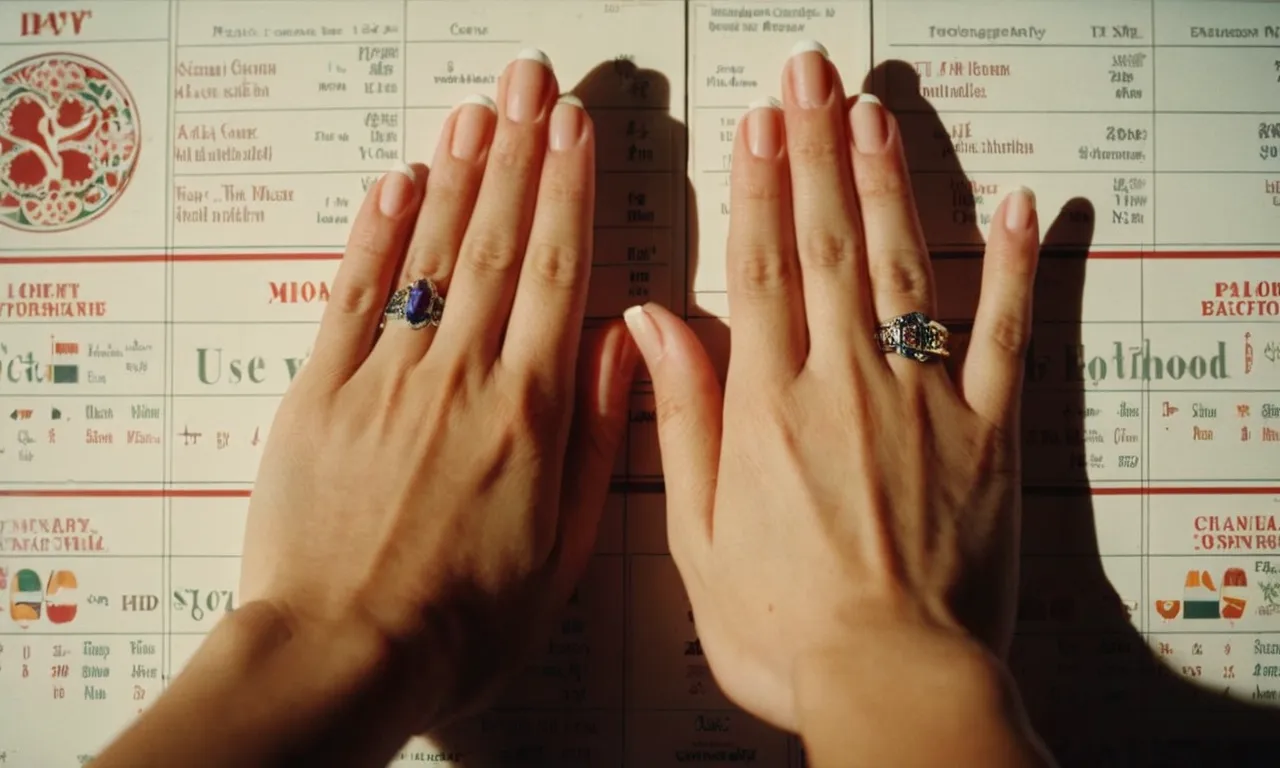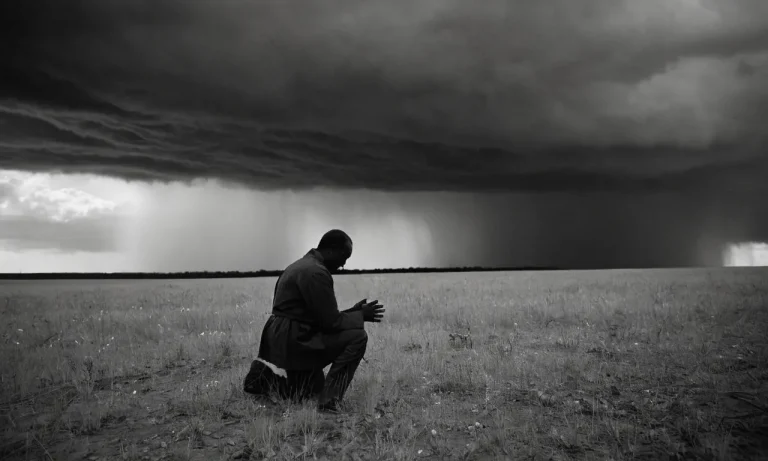Meaning Of Hand Mudras: A Comprehensive Chart
Unlock the ancient wisdom of hand gestures with our comprehensive guide to the meaning of hand mudras. These intricate hand positions, deeply rooted in Eastern spiritual traditions, hold profound symbolism and power.
If you’re short on time, here’s a quick answer to your question: Hand mudras are symbolic hand gestures used in various spiritual practices, such as yoga, meditation, and religious rituals. Each mudra carries a specific meaning and is believed to channel energy, promote healing, and facilitate spiritual growth.
In this article, we’ll delve into the fascinating world of hand mudras, exploring their origins, significance, and the meanings behind some of the most commonly practiced mudras. Whether you’re a seasoned practitioner or a curious learner, this guide will provide you with a deeper understanding of these sacred gestures and their role in personal and spiritual development.
The Origins and Significance of Hand Mudras
The Ancient Roots of Mudras
Hand mudras are symbolic hand gestures that have been practiced for centuries in various Eastern traditions, particularly Hinduism, Buddhism, and yoga. The word “mudra” is derived from the Sanskrit term “mud” meaning delight or pleasure, and “dra” meaning to hold or bring forth.
These sacred gestures have their roots in ancient Indian scriptures and texts, such as the Natya Shastra, which dates back to around 200 BCE to 200 CE. Mudras were initially used in ritual dances and performances, but over time, they became an integral part of spiritual practices and meditation.
The Symbolic Language of the Hands
Mudras are considered a powerful form of non-verbal communication, conveying deep spiritual meanings and energies through the positioning of the fingers and hands. Each mudra has a specific symbolism and purpose, ranging from promoting physical and mental well-being to invoking divine blessings and facilitating spiritual growth. For instance, the Gyan Mudra (the gesture of knowledge) is believed to enhance concentration and wisdom, while the Anjali Mudra (the gesture of reverence) is used during prayer and meditation to foster a sense of humility and gratitude.
According to ancient texts, the hands are connected to various energy channels (nadis) within the body, and the precise placement of the fingers can influence the flow of prana (life force energy). A study published in the International Journal of Yoga in 2017 found that practicing specific mudras can positively impact physiological parameters such as heart rate, blood pressure, and respiratory rate, suggesting their potential therapeutic benefits.
Mudras in Yoga and Meditation
In the practice of yoga and meditation, mudras play a crucial role in enhancing the mind-body connection and facilitating a deeper state of awareness and relaxation. 😊 Many yoga asanas (postures) are often accompanied by specific mudras to amplify their effects.
For example, the Dhyana Mudra (the gesture of meditation) is commonly used during seated meditation practices to cultivate inner peace and focus.
According to Yoga Journal, a reputable online resource for yoga practitioners, over 25 different mudras are widely practiced in various yoga traditions. These gestures are often combined with pranayama (breath control techniques) and mantras (sacred sounds or words) to create a powerful synergy that can profoundly impact one’s physical, mental, and spiritual well-being.
Mudras are not just physical gestures but a profound expression of the mind-body-spirit connection, offering a gateway to self-awareness, healing, and spiritual growth. As interest in holistic practices continues to grow, the ancient wisdom of mudras is being embraced by an increasing number of individuals seeking balance, harmony, and inner transformation.
🙏
Commonly Practiced Hand Mudras and Their Meanings
Gyan Mudra: The Gesture of Knowledge
The Gyan Mudra, also known as the “Gesture of Knowledge” or “Mudra of Wisdom,” is one of the most widely recognized and practiced hand gestures in various spiritual and meditation practices. This mudra is formed by touching the tips of the thumb and index finger together, while keeping the other three fingers extended and relaxed.
It is believed to stimulate the flow of energy and promote mental clarity, concentration, and understanding. According to Yoga Journal, this mudra is often used during meditation, study, or teaching sessions to enhance focus and facilitate the absorption of knowledge.
Anjali Mudra: The Gesture of Reverence
The Anjali Mudra, also called the “Gesture of Reverence” or “Salutation Seal,” is one of the most recognized and widely practiced hand gestures in various spiritual and cultural traditions. It is formed by bringing the palms together in front of the chest, with the fingers pointing upwards and the thumbs resting against the sternum.
This mudra is commonly used during prayer, meditation, or as a respectful greeting. It symbolizes humility, gratitude, and a connection with the divine or the higher self. According to The Art of Living, practicing the Anjali Mudra can help cultivate a sense of inner peace, calmness, and devotion.
Vayu Mudra: The Gesture of Air
The Vayu Mudra, also known as the “Gesture of Air” or “Wind Seal,” is a powerful hand gesture believed to regulate and balance the flow of air or prana (life force energy) within the body. To form this mudra, the index finger and thumb are joined together, while the other three fingers remain extended and relaxed.
According to Yogabody, practicing the Vayu Mudra can help alleviate respiratory issues, such as asthma, bronchitis, and shortness of breath. Additionally, it is said to enhance mental clarity, focus, and concentration. 🧘♀️
Shunya Mudra: The Gesture of Emptiness
The Shunya Mudra, also referred to as the “Gesture of Emptiness” or “Void Seal,” is a powerful hand gesture that symbolizes letting go and embracing the present moment. To form this mudra, the tips of the middle and ring fingers are joined together, while the thumb, index, and little fingers remain extended and relaxed.
According to Yoga Journal, practicing the Shunya Mudra can help cultivate a sense of inner peace, clarity, and detachment from negative thoughts and emotions. It is often used during meditation or mindfulness practices to promote a state of calmness and presence.
Apana Mudra: The Gesture of Elimination
The Apana Mudra, also known as the “Gesture of Elimination” or “Downward Energy Seal,” is a powerful hand gesture believed to promote the proper functioning of the digestive system and facilitate the elimination of waste from the body.
To form this mudra, the tips of the middle and ring fingers are joined together, while the thumb presses gently on the tips of the index and little fingers. According to Yoga Journal, practicing the Apana Mudra can help alleviate issues related to constipation, bloating, and other digestive disorders.
It is often recommended to practice this mudra in the morning or before meals to enhance the body’s natural elimination processes.
Incorporating Mudras into Your Practice
Preparing for Mudra Practice
Before incorporating mudras into your meditation or yoga practice, it’s essential to prepare your mind and body. Start by finding a quiet and comfortable space where you can practice without distractions.
Take a few deep breaths to center yourself and release any tension or stress you may be carrying. According to Yoga Journal, mudras are most effective when practiced with a calm and focused mindset.
It’s also recommended to sit in a comfortable cross-legged position or on a chair with your spine straight. This will help promote proper alignment and energy flow throughout your practice. Remember, mudras are not just hand gestures; they are a powerful tool for cultivating physical, mental, and spiritual well-being.
Combining Mudras with Meditation and Yoga
Mudras can be seamlessly integrated into your existing meditation or yoga practice. During meditation, mudras can help deepen your concentration and enhance the flow of energy within your body. Some popular mudras for meditation include Gyan Mudra (🤲 for wisdom and knowledge), Dhyana Mudra (👌 for focus and concentration), and Anjali Mudra (🙏 for reverence and gratitude).
In yoga, mudras can be used to amplify the benefits of specific asanas (poses) or to prepare the body for deeper stretches. For example, Yoga Mudra (👐 with palms facing up) is often used during seated forward folds to open the chest and promote relaxation.
According to a study by the National Center for Biotechnology Information, incorporating mudras into yoga practices can enhance mindfulness and overall well-being.
Customizing Mudras for Personal Intentions
One of the beauties of mudras is that they can be tailored to suit your personal intentions and goals. Whether you’re seeking inner peace, improved focus, or physical healing, there’s a mudra that can support your journey.
For instance, Prana Mudra (👌 with thumb and ring finger touching) is believed to promote vitality and balance the flow of life force energy.
Don’t be afraid to experiment and create your own unique mudra combinations. The power of mudras lies in your intention and the energy you channel through your practice. As you become more familiar with mudras, you’ll develop a deeper understanding of their significance and how they can enhance your overall well-being.
😊
The Benefits of Practicing Hand Mudras
Physical and Mental Well-being
Practicing hand mudras can have a profound impact on our physical and mental well-being. According to a study published in the Journal of Evidence-Based Complementary & Alternative Medicine, mudras can help regulate the flow of energy (prana) in the body, promoting balance and harmony.
This, in turn, can alleviate various physical ailments, such as headaches, digestive issues, and chronic pain. Additionally, mudras have been shown to improve concentration, reduce stress and anxiety, and cultivate a sense of inner peace and tranquility. 😌
Emotional Balance and Stress Relief
In our fast-paced, modern world, emotional imbalances and stress have become increasingly common. Fortunately, the practice of hand mudras can serve as a powerful tool for emotional regulation and stress relief.
By consciously directing our energy through specific hand gestures, we can cultivate a sense of calm and groundedness, even in the midst of life’s challenges. According to a study conducted by Hindawi, regular mudra practice can significantly reduce symptoms of anxiety and depression, fostering a greater sense of emotional well-being.
🙂
Spiritual Growth and Enlightenment
Beyond their physical and emotional benefits, hand mudras are deeply rooted in spiritual traditions and practices. Many ancient texts, such as the Upanishads, describe mudras as powerful tools for spiritual growth and enlightenment.
By connecting with the subtle energies within and around us, mudras can facilitate profound states of meditation, heightened awareness, and a deeper understanding of our true nature. 💫 Practitioners often report experiencing a sense of oneness, inner peace, and profound insights through regular mudra practice.
As the renowned spiritual teacher Eckhart Tolle once said, “Mudras are like waking up a part of the body that had been sleeping.” 🌟
Whether you’re seeking physical, emotional, or spiritual well-being, the practice of hand mudras offers a wealth of benefits. By incorporating these ancient gestures into your daily routine, you can unlock a powerful tool for self-transformation and personal growth.
Why not give it a try and experience the magic of mudras for yourself? 👏
Respecting Cultural Traditions and Etiquette
Understanding the Cultural Context
Mudras, the intricate hand gestures used in various spiritual and cultural practices, hold deep significance beyond their physical forms. These symbolic hand positions originate from ancient traditions and carry profound meanings that have been passed down for generations.
To truly appreciate and practice mudras with authenticity, it is essential to understand and respect their cultural context.
According to Yoga Journal, mudras have been an integral part of Hindu and Buddhist traditions for centuries, serving as a means of channeling energy, cultivating mindfulness, and facilitating spiritual growth.
In these ancient practices, mudras are often accompanied by specific mantras, breathing techniques, and meditation practices, forming a holistic approach to self-realization and enlightenment.
It is estimated that there are over 300 different mudras, each with its own unique symbolism and purpose. For instance, the Gyan Mudra, formed by touching the tips of the thumb and index finger, is believed to enhance concentration and wisdom, while the Anjali Mudra, with palms pressed together, represents reverence and gratitude.
😊
Practicing Mudras with Reverence and Respect
When incorporating mudras into your spiritual practice or daily life, it is crucial to approach them with reverence and respect for their cultural origins. This means understanding the deeper meanings behind each gesture and honoring the traditions from which they emerged.
Avoid treating mudras as mere physical exercises or trendy fads, as this can be seen as cultural appropriation and disrespectful to the communities that have preserved these sacred practices for generations.
If you are new to mudras, consider seeking guidance from experienced teachers or practitioners who can provide proper instruction and context. Many reputable yoga studios, meditation centers, and online resources offer classes or workshops specifically focused on mudras and their cultural significance.
Alternatively, you can explore authoritative websites that provide detailed explanations and visual guides to help you learn and practice mudras correctly.
Remember, respecting cultural traditions and etiquette is not about imposing limitations, but rather about cultivating a deeper appreciation and understanding of the rich tapestry of human spirituality.
By approaching mudras with an open mind and a willingness to learn, you can not only enrich your personal practice but also contribute to the preservation and celebration of these ancient wisdom traditions. 🙏
Conclusion
The ancient practice of hand mudras offers a profound connection to the spiritual realms, allowing us to harness the power of symbolic gestures for personal growth, healing, and enlightenment. By understanding the meanings behind these sacred hand positions, we can deepen our yoga and meditation practices, cultivate mindfulness, and unlock the transformative potential within.
Whether you’re seeking physical and mental well-being, emotional balance, or spiritual growth, incorporating hand mudras into your routine can be a powerful tool on your journey of self-discovery. Remember to approach these practices with reverence and respect for the cultural traditions from which they originate, and allow the wisdom of the ages to guide you towards a more harmonious and fulfilling life.








